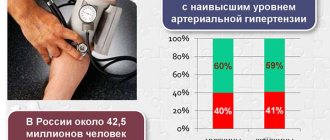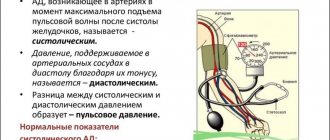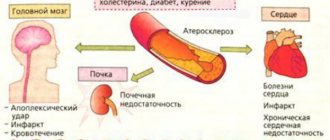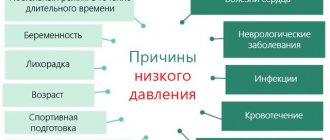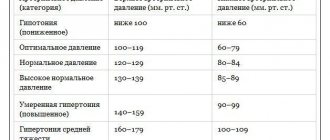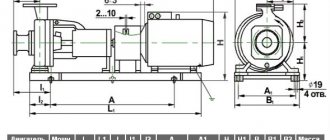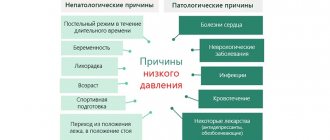What do the numbers on the blood pressure monitor mean?
When measuring pressure, you need to pay attention to all indicators displayed on the monitor. The first number shows the systolic (upper) pressure, which occurs at the moment of maximum contraction of the heart muscle. The device records the diastolic (lower) pressure during complete relaxation. The third indicator is also important – heart rate.
If you see unusual numbers on the tonometer, you should not panic. They may mean that the device is faulty. However, if normal upper and low lower pressure is demonstrated by another device, there is a reason to consult a doctor for advice. After a comprehensive examination, a specialist will be able to draw a conclusion about why the pressure values deviated from the norm and draw up a scheme for the most effective therapy.
The reference values can be called 120/80 mmHg. Art. with a pulse from 60 to 80. However, for people of different ages, genders, health conditions and lifestyles, they may differ slightly from the ideal, which will not be a deviation from the norm. But only in the case when the pulse difference (the difference between lower and upper blood pressure) is from 20 to 40 units. At a pressure of 120 to 60, the upper value is optimal, but the readings at the time of diastole are underestimated and may indicate health problems. The impressive pulse difference also raises concerns.
No ads 1
Additional symptoms
Low diastolic pressure against a background of normal systolic pressure is usually accompanied by characteristic symptoms:
- A man has a headache.
- Your heart rate slows or your pulse becomes irregular.
- Dizziness occurs when you suddenly turn your head or come out of the dark into the light.
- Fainting, starting with darkening of the eyes, is possible.
- Memory deteriorates.
- Activity decreases, fatigue occurs even at rest.
- The patient becomes irritable, periods of apathy are replaced by aggression.
With both hypertension and hypotension, a person begins to react sharply to the vagaries of the weather with increased symptoms
Reasons for violation
If the pressure is 120 to 60 mmHg. Art. when the pulse is 50, it is recorded for the first time or bothers a person only occasionally; it can be caused by physiological factors and can be easily corrected. Among the main causes of the condition are:
What does pressure 135 over 65 mean?
- hypothermia;
- dehydration;
- stress;
- starvation;
- intense physical activity, for example, in the gym (pulse and blood pressure drop during rest - the heart regains strength after overexertion);
- pregnancy (during the period of bearing a child, especially in the 1st trimester, blood pressure can fluctuate in the range of 20 mm Hg about the norm and this does not indicate abnormalities in the functioning of the body).
No ads 2
Pressure 125 over 60 or 120 over 60 mmHg. Art., recorded regularly, can be a symptom of serious pathologies, including the following:
- endocrine diseases (adrenal diseases, diabetes mellitus);
- cardiac pathologies (bradycardia, heart failure, congenital aortic valve defects, infectious myocarditis, coronary artery disease, recent heart attack, etc.);
- atherosclerosis;
- kidney diseases;
- malignant tumors;
- acute poisoning;
- pulmonary embolism;
- profuse blood loss due to extensive trauma.
Low diastolic pressure may be accompanied by increased heart rate. Thus, a pulse of 90 is a compensatory reaction to hypoxia and decreased blood circulation.
If the lower pressure drops to 40 mm Hg. Art. Emergency assistance should be sought as this condition may indicate a life-threatening condition requiring urgent hospitalization. Trying to raise this pressure on your own with pills or a cup of strong coffee is not recommended.
Important! Some medications can also reduce diastolic pressure. If the phenomenon occurs during the treatment of a chronic or infectious disease, this must be reported to the doctor, who will adjust the dose of the medication or select an alternative that does not provoke blood pressure fluctuations.
If unpleasant symptoms associated with changes in blood pressure appear, you need to visit your general practitioner, who will give you directions for examination.
Pathology or normal?
If we consider the average statistical indicators of the norm, then the pressure of 110 to 70 corresponds to the acceptable limits. However, each person has his own “working” pressure, at which he feels most optimal. These numbers are purely individual, therefore, when analyzing indicators of 110 to 70, it is necessary to take into account the “working” level of blood pressure. You should also rely on the presence of concomitant pathologies and the age of the patient.
It should also be said that when recording indicators on a tonometer, it is advisable to write them down in a notebook, especially if the numbers tend to change significantly during the day. Moreover, experts record the pressure level without rounding. For example, like this:
- 108 by 74;
- 101 to 66;
- 107 to 67;
- 126 by 66;
- 111 to 65;
- 109 by 70, etc.
Important! In medical documentation, the upper indicator is separated from the lower one by a “/”. For example, 114/75.
Puberty
If we talk about boys and girls from 13 to 16 years old, then the indicator 110 to 70 fully corresponds to normal pressure. The teenage period is quite often accompanied by deviations in blood pressure, both upward and downward, as the body matures and the hormonal balance changes.
20-40 years
For this group of patients, the indicators are also considered normal, however, “working” pressure and fluctuations in numbers throughout the day should be taken into account. For example, if in the morning and evening the tonometer shows 130 over 90 and a person feels great, and during the day the readings appear at 100 over 68, which are accompanied by headache and dizziness, rapid heartbeat, you can safely think about hypotension.
Hypotension is a decrease in blood pressure. This condition can be physiological and pathological. The physiological type does not require medical intervention, since it can arise as a result of physical exertion, emotional shock, and experiences. After some time, the indicators return to normal on their own. The pathological type has a specific cause in the form of a concomitant disease, manifests itself with a clear clinical picture and requires treatment.
During pregnancy
While carrying a baby, the mother's blood pressure can either increase or decrease. A decrease in blood pressure during the first 12-14 weeks of pregnancy is especially dangerous; it usually occurs against the background of toxicosis, accompanied by frequent vomiting. For thin women and expectant mothers of average build, a pressure of 110 over 70 is absolutely normal. Usually it is kept within the range of 120-117 to 75-70 throughout the entire gestation period (provided that the mother is in optimal health). If the woman is large and obese, 110 over 70 may be a symptom of hypotension, since in such patients the “working” blood pressure is usually slightly higher.
Aged people
Elderly patients have slightly different normal indicators, because age-related changes occur in the vessels and myocardium. For older people, values of 135-140 (upper pressure), 85-90 (lower pressure) are considered normal. Accordingly, 110 over 70 will be a symptom of hypotension for them. With a sustained decrease in blood pressure, the condition is called arterial hypotension.
It should be taken into account that blood pressure indicators are affected by physical activity, hormonal changes (for example, in this case we are talking about menopause in women), stressful situations, conversations during blood pressure measurements, alcohol abuse, number of meals, smoking, amount of salt in consumed products. For example, if a person is used to eating fairly salty foods, and then suddenly decides to limit the amount of salt, the pressure can really drop.
Also, a decrease in blood pressure levels occurs while taking antihypertensive drugs, especially if they are selected not by specialists in the field of cardiology or therapy, but by the patient himself.
Diagnostic methods
The reason why low blood pressure decreases can be determined through comprehensive diagnostics. The list of survey activities includes:
- General blood analysis. Biochemical research allows us to identify anemia, which often causes low blood pressure, especially in young women.
- ECG. An echocardiogram gives a complete picture of the structure of the heart and whether its functioning is normal. In this way, it is possible to determine heart valve disorders and other severe pathologies in a person of any gender and age.
- X-ray. Through X-ray examination, it is possible to identify a number of diseases that can lead to fluctuations in blood pressure, accompanied by an increase or decrease in heart rate.
Age norms of blood pressure: yesterday and today
You may not know, but the European Society of Cardiology has tightened blood pressure standards. The thing is that earlier recommendations “failed” to prevent complications of vascular diseases. And damage to the brain, heart, eyes and kidneys due to hypertension continues to be a serious medical problem. So what “numbers” are recommended by leading experts? And what can “spoil” blood pressure?
What changed
According to previously existing standards, the blood pressure (BP) of a healthy person at rest should not exceed the following values:
- 120/70 – 130/80 – for people aged 20-40 years,
- 140/90 – at the age of 40-60 years,
- and 150/90 for patients over 60 years of age.
New recommendations from European experts (2018) have significantly tightened the standards, and now the blood pressure “figures” should not exceed:
- 129/80 – for people under 65 years of age
- and 139/80 for older patients.
Which, by the way, corresponds to the recommendations of American cardiologists, adopted a year earlier than European ones.
As you can see, the changes concern not only the upper (systolic), but also the lower (diastolic) pressure. This means that the diagnosis of hypertension itself and the initiation of its treatment are now authorized much earlier.
What can spoil blood pressure?
Of course, one of the most significant risk factors for hypertension is heredity and age-related changes.
Thus, cases of vascular pathologies, especially with a disabling outcome in close relatives, are a serious reason to take the vessels under constant “control”.
And with “age,” the vascular wall significantly loses its elasticity and ability to expand, because:
- firstly, the synthesis of collagen and elastin fibers decreases,
- and secondly, the thickened walls of blood vessels due to pressure changes (the vasoconstrictive effect of stress hormones, cigarettes and some other factors) do not have the ability to stretch.
So we can say that vascular pathologies have a “cumulative” nature, beginning to form at a young and active age.
In addition, with age, cholesterol deposition and the formation of plaques are observed, narrowing the diameter of blood vessels and further aggravating the problem.
Blood pressure "under control"
Taking into account the above factors, it is obvious that it is better to start paying attention to blood vessels at a young age and regularly.
The presence of regular and/or prolonged stress, smoking, drinking alcohol, a sedentary lifestyle, excess weight and diseases of the kidneys, heart or adrenal glands are reasons to periodically check the degree of damage to the vascular wall. And for this, a blood test for ultrasensitive C-reactive protein is suitable.
The marker reflects vascular damage long before the formation of atherosclerotic plaques and blood clots on the damage, as well as changes on ultrasound and any clinical signs. Therefore, it can be used for the earliest detection of the degree or risk of vascular pathologies.
In addition, it is worth taking control of cholesterol and its fractions, even outside of eating “fatty” foods. After all, lipid levels have a direct relationship with:
- liver health (since this is the place of its formation),
- level of sex hormones,
- overweight,
- as well as diseases that disrupt fat metabolism (diabetes mellitus, lack of “thyroid” hormones and some others),
and cholesterol “balance” disorders can be detected at absolutely any age.
Periodic “jumps” in pressure and the development of arterial hypertension can also be provoked by:
- imbalance of salts (sodium, potassium, chlorine),
- disorders of urinary function of the kidneys
- and excess renin.
And the latter also makes hypertension resistant to standard therapy. And assessment of the renin level is used to exclude the renal nature of the “pressure”.
Treatment
What to do if the examination reveals a serious pathology that requires treatment? In this case, you should not adjust blood pressure, but focus on solving the primary problem. Only by eliminating the reason why the pressure dropped from the usual 120 to 80 to 120 to 65 or 60 mm Hg. Art. you can improve your well-being.
With a pressure of 120–122 at 60–66 mm Hg. Art. alcohol, namely red wine, in small doses is not only allowed, but recommended by doctors
If no concomitant diseases are found, then you can stick to home methods to solve the problem. Namely:
- When your head starts to hurt due to decreased blood pressure, you can take a tablet that has an antispasmodic effect, for example, Spazmalgon or Citramon, which slightly increases blood pressure.
- Traditional medicine recipes, previously agreed upon with your doctor, will help strengthen blood vessels and normalize the heart rate: decoctions of elecampane, yarrow, infusions of Chinese lemongrass, tinctures of ginseng and eleutherococcus. The course of treatment is at least 40 days.
- It is important to include sports in your schedule: jogging in the nearest park, going to the pool or doing yoga. If you have no free time at all, you can limit yourself to morning exercises.
- Problems with blood pressure may be associated with disrupted sleep patterns. In this case, it is worth eliminating shift work or night work, which prevents you from fully resting at night for at least 8 hours.
- The most dangerous habit that negatively affects blood pressure is smoking. Nicotine reduces the volume of the lungs, causing the heart to work at an increased pace, and clogs the blood vessels and liver cells. By giving up this bad habit, you can quickly get rid of blood pressure fluctuations without the use of medications.
- Nutrition plays a leading role in normalizing blood pressure. It is better to opt for 5 meals a day in small portions. Food should be varied, rich in healthy vitamins and microelements.
Advice! The Mediterranean diet, consisting mainly of sea fish, vegetables, and olive oil, has the most beneficial effect on the body as a whole and the state of the cardiovascular system as a whole. For snacks, you should choose nuts, fruits, dried fruits, rather than empty carbohydrates.
The relationship between hypotension and pulse
Normal heart rate also depends on the person's age. In children it is more rapid, but in older people, on the contrary, it is slightly slower. The average heart rate per minute is 60-90 beats. It happens that when blood pressure levels decrease, the heart rate increases, slows down, or remains within acceptable limits. Why and under what conditions does this happen and what does it mean?
What are the reasons for an increase in heart rate (pulse rises to 100 and above) against the background of a drop in pressure:
What does pressure 100 over 40 mean?
- dehydration, for example, due to intestinal infections, stomach upsets;
- bleeding of varying severity;
- pathologies of the cardiovascular system (decrease in circulating blood volume, embolism, inflammation of the pericardium);
- acute inflammatory processes of internal organs;
- shock states of various origins;
- pregnancy period;
- taking certain medications.
Bradycardia (decrease in heart rate) against the background of low blood pressure is observed with hypothermia, pregnancy, significant physical activity (professional athletes), certain heart diseases (blockades, arrhythmias), poisoning and pathologies of the thyroid gland. In rare cases, hypotension is accompanied by a normal pulse (70-80 beats per minute).
